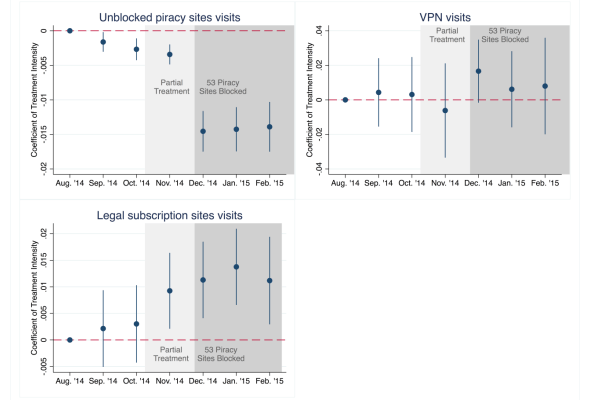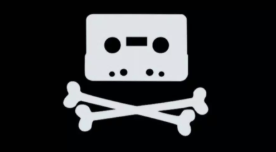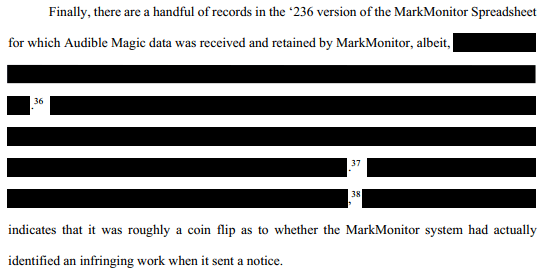
In recent years website blocking has become one of the most widely-used anti-piracy enforcement mechanisms in the world.
ISPs in several dozen countries are now required to prevent subscribers from accessing a variety of ‘pirate’ sites. While new blocks are added every month, research on their effectiveness has been rather scarce.
Most ‘studies’ promoted by copyright holders conclude that blocking a site does indeed reduce traffic to the affected domains. While this is hardly surprising, less is known about where ‘blocked’ subscribers go instead.
Do they simply give up and stop pirating? Are they finding ways to circumvent blockades? Do they decide to sign up for a paid streaming service such as Netflix? As it turns out, all of the above can be answered positively, according to one of the most details studies on site blocking.
In a paper titled The Effect of Piracy Website Blocking on Consumer Behavior, researchers connected to the Carnegie Mellon University’s IDEA program thoroughly researched the effect of various blocking orders in the UK.
The latest version of the peer-reviewed paper, which will soon be published in the Management Information Systems Quarterly, builds on earlier findings that we’ve reported on in the past.
For example, the researchers found that when ISPs only blocked The Pirate Bay in the UK in 2012, not much happened. Pirates were still pirating but simply switched to alternative sites or Pirate Bay mirrors. Others circumvented the blockades by using VPNs.
Follow-up research, looking at the effect of 19 additional sites that were blocked by UK ISPs in 2013, revealed a different trend. Blocking more sites decreased the numbers of visits to pirate sites, but only cyberlockers.
This was later confirmed with data from an even larger blocking wave from 2014, which also found that visits to other unblocked pirate sites decreased. These data also revealed another interesting trend. The broader blocking effort also increased the number of visits to paid streaming services such as Amazon and Netflix.
2014 block effects

The latest article expands on the last finding by estimating whether the blockades actually increased the number of subscriptions. This, opposed to the possibility that pirates were already subscribed and simply used the legal services more after the blocks.
To do this, the researchers looked at ‘pirates’ who repeatedly visited legal services after the blockades, but didn’t before, and compared this to people who were not pirating. This shows that the blocks increased the number of paid subscriptions to streaming services.
“We show that blocking 53 sites in 2014 caused treated users to decrease piracy and to increase their usage of legal subscription sites by 7-12%. It also caused an increase in new paid subscriptions,” the researchers write in their paper.
“Together, these results imply that supply-side antipiracy enforcement can be effective in turning users of illegal piracy channels toward paid legal
consumption,” the paper adds.
It has to be noted that the estimated increase in subscriptions is relatively small. It’s just 1.1 percentage points higher than in the control group of people who were not affected by the blocks. That said, this translates to around 50,000 new subscribers in the UK, which is pretty significant.
Overall the research finds that there are varying responses to pirate site blockades. Some may circumvent them by using alternative pirate sites or signing up for a VPN, while others increasingly turn to legal alternatives.
In addition to this, one of the main messages is that blocking multiple sites at once is more effective than blocking just a single site. Broader blocks are likely to make it harder for people to find pirated content and, as a result, some people appear to give up.
The researchers illustrate this by pointing at the ‘Hydra’ comparison, which has been used by The Pirate Bay as well in the past. In Greek mythology, the Hydra is a beast that’s particularly hard to kill, as it has multiple heads that can grow back.
“Blocking a single site is akin to decapitating only one of the Hydra’s heads. The result will only be a more diffuse network of piracy sites, with no curb on pirating activity,” the researchers write.
Stabbing the Hydra in the hard is the only way to kill it effectively. While that may be impossible in the pirate ecosystem, cutting off as many heads as possible comes close. Especially if these heads are important sources for other sites.
“Blocking multiple sites at once is akin to decapitating several of the Hydra’s heads. With the network of sites significantly disrupted, this could possibly be a mortal wounding. We have shown that users’ behavior is sufficiently disrupted and that some increase the use of legal channels, and reduce illegal ones,” the paper concludes.
The website blocking research was carried out as part of Carnegie Mellon University’s Initiative for Digital Entertainment Analytics (IDEA), which received a generous donation from the MPAA. However, the researchers stress that their work is carried out independently.
Source: TF, for the latest info on copyright, file-sharing, torrent sites and more. We also have VPN reviews, discounts, offers and coupons.












